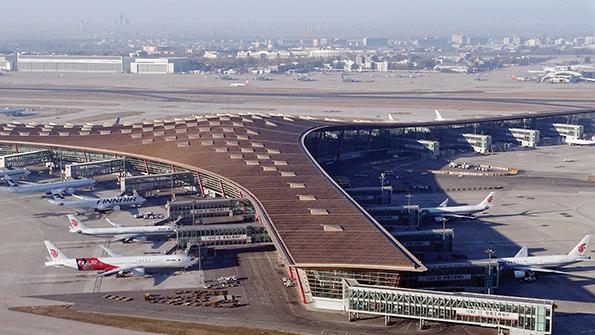
Airlines are eager to resume more services to Beijing Capital International Airport.
The eventual reopening of China’s international air travel market remains the major wild card in the outlook for the Asia-Pacific airline industry. While restoring Chinese traffic flows would be essential to the region’s full recovery, there is still much uncertainty as to when—and how—this may occur.
Massive growth in outbound and inbound travel made China one of the most important markets for many of the Asia-Pacific region’s airlines before the pandemic. However, international capacity in mainland China is now at skeleton levels due to its strict COVID-19 travel policies.
China represents “the elephant that isn’t in the room” for the airline industry, said Subhas Menon, director general of the Association of Asia Pacific Airlines (AAPA). China-related traffic accounted for as much as 40% of the region’s pre-pandemic total, including domestic and international traffic, Menon said during the CAPA – Centre for Aviation’s Asia Summit in Singapore on Nov. 3.
- Government could take a phased approach to reopening
- Significant traffic increases are unlikely in the near term
The region’s high exposure to China is one of the reasons the Asia-Pacific recovery is lagging other parts of the world. Asia-Pacific international capacity is now at 52.6% of 2019 levels, according to data from CAPA and OAG. This is far below the 95.3% recovery rate in North America and 85.3% in Europe.
Mainland China’s international capacity is at 8% of pre-pandemic levels, the lowest recovery rate among major Asia-Pacific region markets.
The Chinese government restricts all international airlines to a handful of flights on specified routes to and from this market, in addition to other COVID-19 measures such as a required quarantine on arrival. There has been a slight easing in recent weeks, with more flights allowed and a reduction in the quarantine time.
Another change is the removal of the so-called circuit breaker rule, which suspended flights if they carried a certain number of positive COVID-19 cases. However, these modifications have not shifted the needle much in terms of airline capacity.
Political factors and health system logistics will influence the reopening timeline, according to Manu Bhaskaran, CEO of Centennial Asia Advisors. On the political side, any broader moves are unlikely to be announced before the National People’s Congress in March 2023, Bhaskaran said during the AAPA annual assembly in Bangkok on Nov. 11.
The government will take a “very cautious, conservative approach,” Bhaskaran noted. “There won’t be a rush to reopen.” China will probably follow a phased approach to removing restrictions.
For this reason, he predicts it is unlikely there will be a major surge in international travel to and from China before late next year.
As with many other Asian carriers, mainland China was a key market for All Nippon Airways (ANA) before COVID-19. At that time, the mainland China and Hong Kong markets combined accounted for 25% of ANA’s international passenger numbers and 15% of revenue, Junichi Miyagawa, ANA’s executive vice president for alliances and international affairs, said at the AAPA event.
ANA is now only operating 20% of its pre-pandemic capacity into mainland China, although the airline is aiming to increase this to about 30% by the end of March, Miyagawa said.
The China market is also extremely important to the Philippines, Cebu Pacific Chief Commercial Officer Alexander Lao said at the CAPA conference. Mainland China was the Philippines’ second-largest source of tourists before COVID-19 and was on pace to become No. 1.
Moves by China to “double down” on its zero-COVID policy have reduced optimism that it could open more widely soon, Lao said. “The question for airlines [is] if China doesn’t reopen [in the short term], are there going to be other new markets or sources of customers?”
It is still “anyone’s guess” when China will reopen, Lim Ching Kiat, managing director for air hub development at Singapore’s Changi Airport Group, said at the CAPA conference. However, this does not necessarily matter for now, he said. “In the near term, our work is cut out for us” rebuilding other pre-pandemic markets and routes. “There’s more than enough work for us to do while waiting for China to open.”
Any rebound in Chinese traffic could put more pressure on an aviation system that is already under strain in keeping up with international travel recovery.
Lao note there are bottlenecks in many parts of the Asia-Pacific region, “and that’s even before China comes back.” He questioned whether there are enough ground-handling workers and resources at some airports to handle the potential increase in Chinese international traffic.
A gradual, phased approach to reopening the mainland China market “would actually be good for the [travel] industry,” Liz Ortiguera, CEO of the Pacific Asia Travel Association, said at the CAPA event.
Ortiguera cited one hotel executive who told her “thank goodness China didn’t reopen at the same time as [other markets],” since the travel industry is facing staffing shortages in many countries.
“Now is the time we need to prepare for when [China] does open up, and make sure we have that [capacity ready],” she said.



